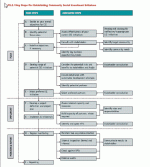 I’ve talked about how businesses can learn from celebrity branding before on Corporate Eye, and today, I’m going to discuss lessons to learn from the David Beckham brand.
I’ve talked about how businesses can learn from celebrity branding before on Corporate Eye, and today, I’m going to discuss lessons to learn from the David Beckham brand.
The online buzz this week centered around David Beckham and his apparent fading brand image. The David Beckham brand reigned supreme while Beckham dominated in Europe. Despite his strength on the U.S. Major League Soccer (MLS) playing field, his brand has dimmed a bit since his Los Angeles Galaxy jersey became a regular sight in U.S. stadiums.
 In marketing terminology, the silo effect occurs when a lack of communication or coordination of efforts between or within business units, departments, teams, etc. has a negative impact on overall performance in terms of meeting goals. It’s important to be aware of the silo effect as it affects branding, because the negative affect to your brand could hurt your business and bottom-line in the long term.
In marketing terminology, the silo effect occurs when a lack of communication or coordination of efforts between or within business units, departments, teams, etc. has a negative impact on overall performance in terms of meeting goals. It’s important to be aware of the silo effect as it affects branding, because the negative affect to your brand could hurt your business and bottom-line in the long term. 



